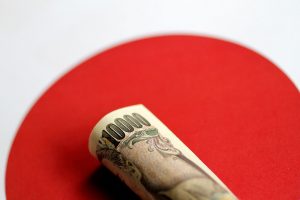TOKYO — Japan’s economy, the world’s third-largest, shrank less than initially estimated in the third quarter, bolstering a view that it is slowly recovering from coronavirus disease 2019 (COVID-19) doldrums even as major export markets show further signs of weakening.
The revised 0.8% annualized quarterly contraction in gross domestic product (GDP) released by the Cabinet Office on Thursday compared with economists’ median forecast for a 1.1% annualized decline in a Reuters poll and an early official estimate of a contraction of 1.2%.
The revision was driven by upward change in private inventories and compared with a 4.5% annualized quarterly gain in the previous quarter.
Japan’s economy unexpectedly shrank in the third quarter as global recession risks, China’s faltering economy, a weak yen and higher import costs hurt consumption and businesses.
The economy may rebound in the current quarter due to easing of supply restrictions on semiconductors and cars, and lifting of COVID-19 border controls, boosting tourism, some analysts say.
However, others are bracing for the global economy to tip into a recession next year, dealing a sharp blow to trade-reliant Asian exporters such as Japan.
“Resumption of inbound tourism and campaigns to promote domestic travel will boost private consumption, helping the economy return to growth in the October–December quarter,” said Takeshi Minami, chief economist at Norinchukin Research Institute.
“Going forward, a global slowdown led by rate hikes in advanced economies and a real-estate slump in China will weigh on the Japanese economy, possibly causing a technical recession, or two straight quarters of contraction in the first half of next year.”
Before annualizing, third-quarter GDP was down 0.2% on the previous quarter, compared with the initial contraction estimate of 0.3%. Analysts had expected a similar decline to the
earlier reading.
Among key sectors, private consumption, which makes up more than half of Japan’s GDP, helped drive growth, though it was revised down. Capital expenditure and exports were the other main contributors to growth.
However, a weak yen and hefty import bills, which boost the cost of living, more than offset GDP growth contributors.
The Bank of Japan’s latest tankan report showed the mood of manufacturers had worsened in the three months to September, as stubbornly high material costs clouded the outlook for the fragile economy. — Reuters

